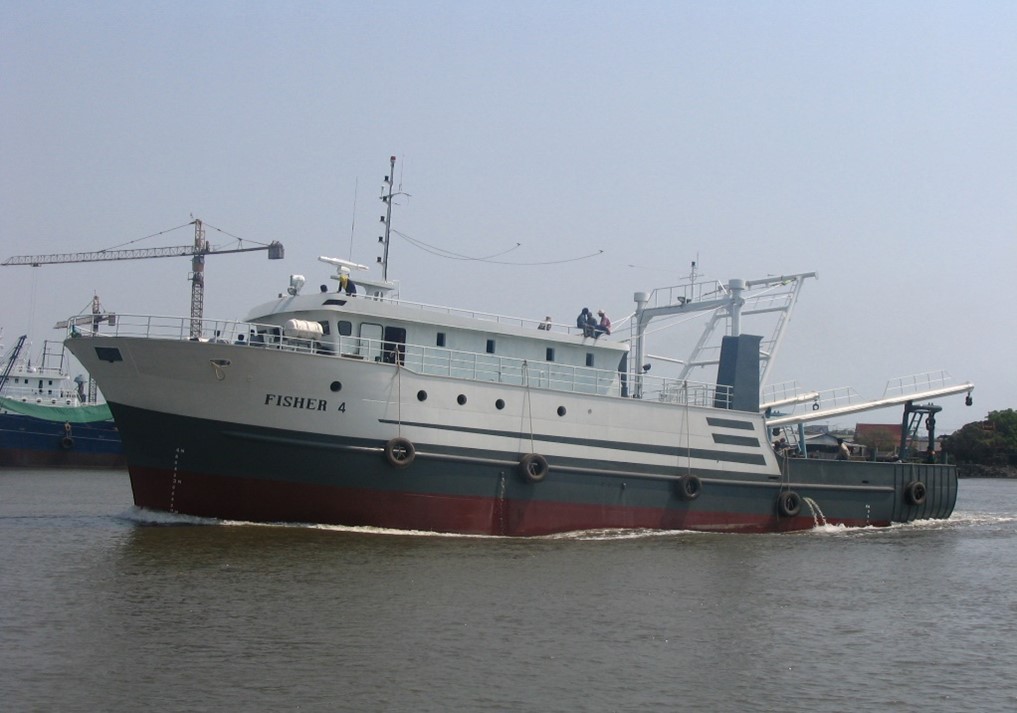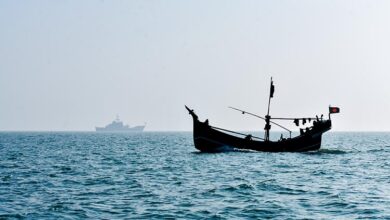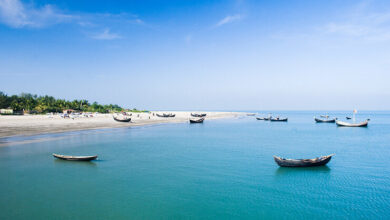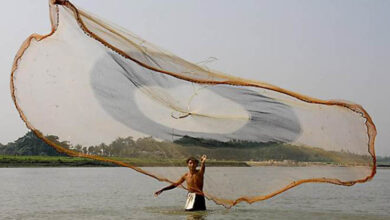The future of sustainable marine fishing in Bangladesh: challenges & opportunities

“Without the sea, we will have no food to eat, no way to make a living, and our sons will have no future.” – A fisherman from Kuakata, February 2025.
The 710 km of Bangladesh’s coastline is home to one of the most plentiful fishing grounds in Asia. The marine life is diverse here and fisheries have helped secure enough food and supported the country’s economy.
Today, with the climate crisis growing and marine habitats more at risk, people are focusing on a major concern:
How will sustainable marine fishing develop in Bangladesh in the future?
The Bay of Bengal is under a lot of stress, partly because it is being overused and also due to climate problems. Within 10 years, decisions will shape whether we protect the ocean or harm it further.
In this article, we discuss the challenges that need to be overcome, the opportunities yet to be explored and a pathway for Bangladesh to become a leader in sustainable marine fisheries.
Why Marine Fishing Matters in Bangladesh?
While rivers play a big role in the country, our seafood is mainly tied to the Bay of Bengal. Marine fishing goes beyond being a job near the coast in Bangladesh. It boosts nutrition, creates jobs and increases the amount of money brought in by exports.
1. Rural Employment and Coastal Livelihoods
o More than 500 000 fishers use 68 000+ mechanised boats and trawlers, yet that’s just one side of the story. Adding to this, marine value chain jobs for deck hands, net makers, boatbuilders, ice plant workers, traders and processors helps employ 2.5–2.8 million people.
In numerous chars and island communities, fishing and the fish trade are responsible for 70 % of the total cash income of each household. More and more women are becoming involved—according to the UN FAO, one in five people working in shrimp grading and drying operations are women.
2. Foreign Exchange Earner
Marine products such as frozen shrimp, cephalopods and finfish, generated $566 million in FY 2023, accounting for around 9 % of the total agri export revenue. Any extra tonne that meets sustainability and traceability standards has a chance to fetch higher prices in the EU, U.S. and Japan.
3. Food Security Shock Absorber
Should inland ponds flood or paddy fields dry out, the rise in marine landings ensures people get enough protein. Farming in Egypt continuously provides enough food for 170 million people who live in a region at great risk of climate change.
Yet this lifeline is fraying. Key species are showing a decrease in biomass, climate change is making their migration routes different and almost one in four catches is lost after the fish are caught. If fish supplies continues to decrease, it could become too expensive for low income families, leading to less good nutrition and job losses for people living near the sea.
4. A key element of the National Plate
Roughly 20% of Canada’s fish production relates to marine species, providing people with almost 820 000 tonnes of edible protein every year.
60 percent of animal protein in Bangladesh is provided by fish. Cox’s Bazar and Patuakhali, both coastal areas, experience water rise of more than 75 %.
Hilsa, tuna, ribbonfish and Bombay duck are traditional dishes that feature in celebrations across Bangladesh.
All in all, looking after marine fisheries is not only important for nature but also for the economy, culture and public health. How things are managed in the next five years could determine if the Bay of Bengal still has food to offer or if all its resources are gone.
The Top Obstacles to Sustainable Marine Fishing in Bangladesh
1. Overfishing & Depleting Stocks
Using mechanized vessels without rules has made it difficult for these species to be managed properly.
As per the Department of Fisheries (DoF), over sixty percent of marine fishing vessels operate without scientific limits on catches.
Illegal, Unreported, Unregulated (IUU) catch is another major threat to the ocean.
- Nearly half of the industrial trawlers operating in the fishing industry do not have a valid license.
- Hilsa biomass slipped 28 % between 2014 2023.
2. Climate Change Impact
Due to increasing sea temperatures, acidic oceans and unusual weather, fish movement and breeding times are changing which makes it hard to predict fishing results. Since 1990, Bay surface temperatures have been increasing by 0.19 °C every decade, causing migratory fish like Indian mackerel to move farther south during peak seasons.
3. Bycatch & Destructive Fishing Practices
Taking juvenile fish and using high-quality nets and bottom trawling have negatively affected many species in the oceans. Bottom trawling makes up almost one-third of fishing activities but collects less than one-sixth of the total revenue, while also harming coral in the process.
4. A lack of necessary infrastructure & insufficient cold chain facilities
Since there is no proper place to store or process seafood, more than 25% of catches are wasted which affects both fishers and seafood exports. Only 12 of the 122 coastal landing centers currently operate ice plants. Some of the businesses transport block ice from Khulna or Chittagong which costs 6 8 tk/kg.
5. Weak Policy Enforcement
Even with the Marine Fisheries Ordinance and National Fisheries Policy, it is still difficult to enforce laws at sea because of insufficient manpower, patrol boats and monitoring tools.
The Marine Fisheries Act requires a 65-day peak season ban, but in the 2024 peak, foreign vessels reportedly committed 173 unauthorized incursions. The revenue lost by local fishers is estimated to be around ৳2.1 bn.
Chances to Build a Solid Foundation for Tomorrow
Even with the hardships, Bangladesh is on the verge of change. Here’s how:
1. Adoption of Ecosystem-Based Management (EBM)
- Using ecology to guide fisheries rather than focusing only on how many species are caught.
- Improving the health of oceans and maintaining a balanced diversity among living things.
2. Strengthening Marine Protected Areas (MPAs)
- Increasing the size of no-fishing areas during the times when fish are spawning.
- Keeping coral beds, mangroves and nursery grounds safe so fish can be restocked by nature.
As of now, territorial waters are covered by MPAs to the tune of 3.4 %. global best practice is ≥ 10 %. The World Bank suggests that if scaling reaches 10%, it could result in an additional US $190 m in annual fish landings by 2035.
3. Setting scientifically reviewed quotas
Such surveys can lead to specific limits for particular species.
- Strengthening the health of key species and permitting them to continue producing food.
The national stock assessment for 2023 has significantly transformed the process. For the first time, scientists have prepared biomass estimates for 65 commercial species. The use of dynamic quotas could result in a 22 % drop in effort and lead to higher long-term landings by 14 %.
4. Sustainable Fishing Gear & Techniques
- Encouraging the use of circle hooks, nets with large mesh and escape panels.
- Teaching fishers how to choose the right fish so as to avoid catching others unintentionally.
Within six months, using fine mesh nets instead of 50 mm square cod ends reduced juvenile mortality and increased fishers’ income by 11 %.
5. Community-Based Co-Management
- Supporting community-based fisher groups in the planning and care of local water bodies.
- Supporting the idea that those using the ocean should take care of it.
6. Blue Economy Integration
Expanding the Blue Economy can lead to more success in marine fisheries.
- Providing employment opportunities in marine aquaculture, tourism, seaweed farming and offshore fish farming.
The Road Ahead: What Needs to Be Done
For Bangladesh’s fisheries to be successful in the future, we need an overall strategy that deals with economic, environmental and social concerns.
- Replace old marine policies with new ones that are made for climate change resilience.
- Collect catch information in real time with the help of digital tools.
- Support the construction of new marine infrastructure and encourage more research in this area.
- Increase the variety of education and preparation for young people and fishers.
- Cooperate with other countries in the Bay of Bengal on resources shared by all.
The process of sustainable marine fishing in Bangladesh has its own set of problems. However, if smart decisions, strong communities, and a drive for innovation are made, the benefits will be enormous.
We should ensure that our seas are rich in life, not only for our time but also for the future.
Farhana Islam
Agriculturist, Researcher
Fisheries Resource Management, CVASU




